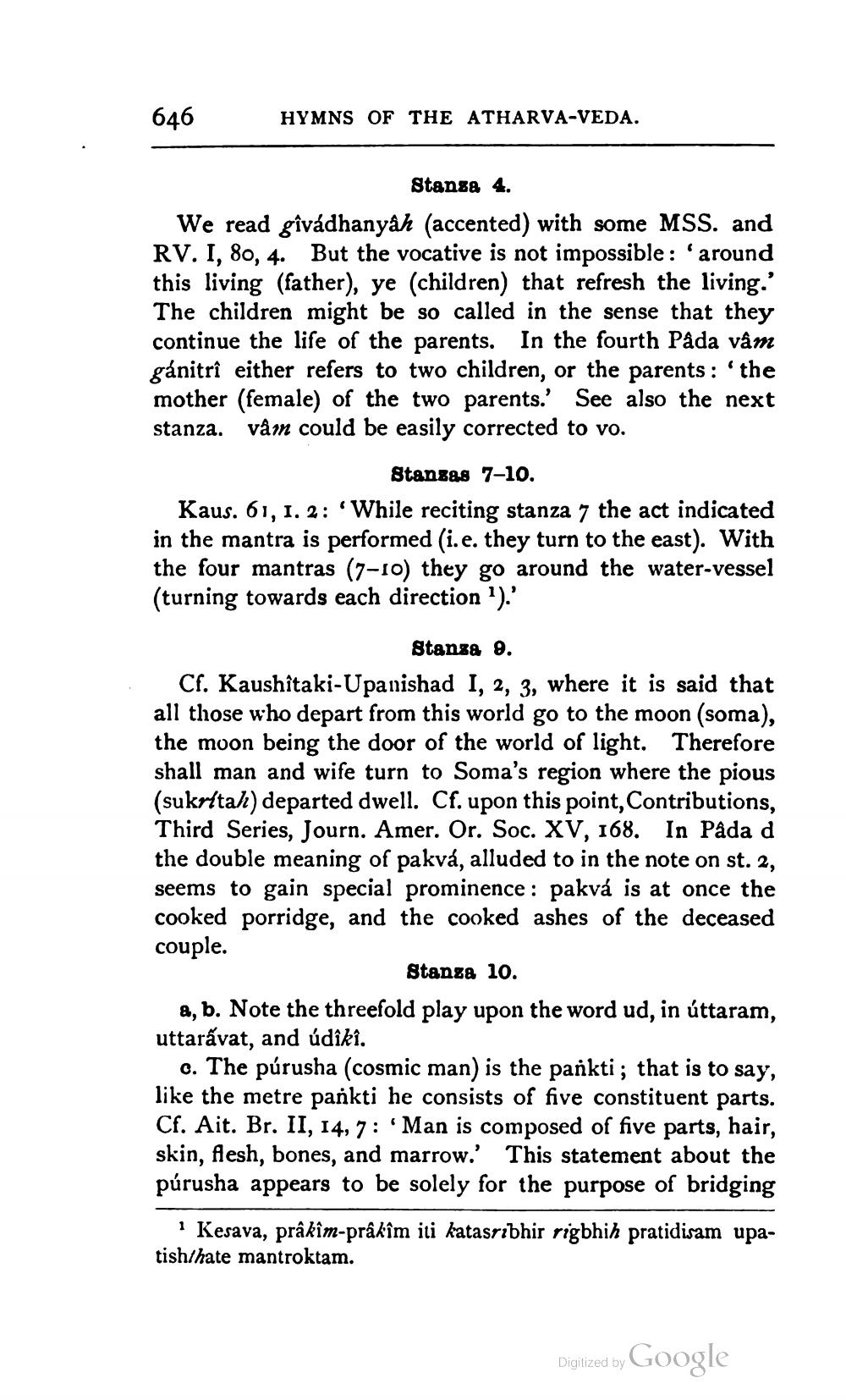________________
646
HYMNS OF THE ATHARVA-VEDA.
Stansa 4. We read gîvádhanyâh (accented) with some MSS. and RV. I, 80, 4. But the vocative is not impossible: 'around this living (father), ye (children) that refresh the living.' The children might be so called in the sense that they continue the life of the parents. In the fourth Påda vam gánitrî either refers to two children, or the parents : 'the mother (female) of the two parents.' See also the next stanza. våm could be easily corrected to vo.
Stangas 7–10. Kaus. 61, 1. 2: ‘While reciting stanza 7 the act indicated in the mantra is performed (i.e. they turn to the east). With the four mantras (7-10) they go around the water-vessel (turning towards each direction ?).'
Stanza 0. Cf. Kaushitaki-Upanishad 1, 2, 3, where it is said that all those who depart from this world go to the moon (soma), the moon being the door of the world of light. Therefore shall man and wife turn to Soma's region where the pious (sukrltak) departed dwell. Cf. upon this point, Contributions, Third Series, Journ. Amer. Or. Soc. XV, 168. In Pada d the double meaning of pakvá, alluded to in the note on st. 2, seems to gain special prominence : pakvá is at once the cooked porridge, and the cooked ashes of the deceased couple.
Stanza 10. a, b. Note the threefold play upon the word ud, in úttaram, uttarávat, and údiki.
c. The púrusha (cosmic man) is the pankti; that is to say, like the metre pankti he consists of five constituent parts. Cf. Ait. Br. II, 14, 7: "Man is composed of five parts, hair, skin, flesh, bones, and marrow. This statement about the púrusha appears to be solely for the purpose of bridging
* Kesava, prâkim-prâkîm iti katasrıbhir rigbhih pratidisam upatishthate mantroktam.
Digized by Google




